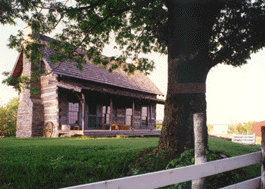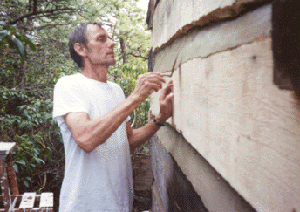 | ||||
 |
||||
| Charles McRaven’s specialty is the preservation of a small but important segment of American history - the hewn or square log house. The interior and exterior faces of hewn logs have been flattened using a broadaxe or adze. The top and bottom surfaces are often left rounded since this - with proper chinking -- does not affect the log’s ability to shed water. |  |
 |
||
| McRaven and his crew can do all the work on a log house or just the specialized segments or the work: hewing the logs; raising the log pen; window and door installation and trim; chinking. | ||||

|
 |
Chinking is the single most important aspect that must be done right.
Chinking is the insulated filling between logs that keeps out the elements.
Proper chinking makes a log house a pleasure to live in. Poor, leaky chinking is why people move out of log houses. Historically this stuffing consisted of anything that was handy: rocks, |
||
|
bricks, wood “chinks,” mud, horse hair, straw,
lime mortar, moss or even just dirt. McRaven developed a sandwich of insulation using “bread” of wire mesh and mortar. This sandwich - properly installed -- both insulates and sheds rain.
Charles McRaven’s book Building and Restoring the Hewn Log House covers hewn log construction and restoration details with instructions, photos and illustrations. You can order this book from Ravenoak Press. click here. For log workshop schedules, click here. | ||||